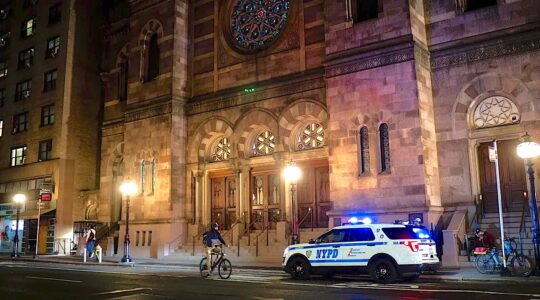Anti-Semitic incidents in the United States rose slightly in 1998, with a 2 percent increase from the previous year, according to the latest audit compiled by the Anti-Defamation League. The annual report attributes the rise to an increase in vandalism against Jewish institutions and property, which drove the total number of incidents to 1,611 in 42 states and the district of Columbia. In 1997, there were 1,571 incidents recorded. New York continues to lead the nation in anti-Semitic incidents, despite a 15 percent decrease to 324 incidents from 380 in 1997.
"Clearly there are too many people who act out their anti-Jewish animus," said ADL’s regional director, Adam Segall, and president, Howard Goldstein, in a statement. "While we are encouraged that the number of incidents have decreased [in New York] they still remain at an unacceptably high level, an average of nearly one incident every day."
In New York City, incidents decreased by 5 percent, while in Westchester the number was unchanged. In Rockland County, the number increased from zero in 1997 to four.
On Long Island, Jews became the most frequent target of hate crimes, suffering 95 incidents in Nassau and Suffolk counties.
"Historically, African Americans have been the largest group," said Phyllis Barell, Long Island regional director of the ADL. Barell theorized that as the suburban counties become more diverse, Jews are held responsible by bigots.
"Jews are always perceived to be more open to immigrants and minorities, so we are seen as part of the problem."
The Internet, with its myriad sites used by neo-Nazi or militia groups, is also viewed as a factor in the national increase.
"The Internet creates a mechanism whereby anyone can learn about hatred, bigotry and intolerance toward any group, especially against Jews," said Howard Katz, associate regional director of the ADL in New York. "It gives information to young individuals who sometimes act out and use this information."
Among the national incidents cited in the report are:
The vandalism and burning of a Jewish home in Wheaton, Minn. in February.
The throwing of a Molotov cocktail into the parking lot of a Jewish community center in Allentown, Pa., in September.
The vandalism of an Iowa synagogue, which included the theft of silver crowns from the Torah scrolls and painting of swastikas and "Burn Jew."
Support the New York Jewish Week
Our nonprofit newsroom depends on readers like you. Make a donation now to support independent Jewish journalism in New York.
New York incidents cited in the report include:
The Christmas eve burglary of a Jewish day care center in Brooklyn, which suffered heavy damage to its computer equipment.
Swastikas and anti-Semitic slurs were drawn with paint on several classroom walls and blackboard.
The burning of a pile of shoes and books in a Far Rockaway, Queens, yeshiva. A November incident in which a bouncer asked people waiting on line outside a Soho bar if they were Jewish. If they responded yes, he asked them to leave. When some attempted to cut back into the line, he asked them, "Would you cut in line for the gas chamber?" The burning of a swastika into the grass of a football field at Massapequa High School in May. The painting of swastikas and the words "Nazi Intel Office" on a Jewish property in Pound Ridge, Westchester. The placement of Holocaust denial ads in several newspapers at State University of New York campuses.
(Campus anti-Semitism across the country dropped from 104 incidents to 86.)
Katz, chairman of the New York Hate Crimes Bill Coalition, said the statistics point to the need to pass anti-bias legislation that has been stalled in Albany for more than a decade.
New York is one of only 10 states in the nation with no sweeping legislation to increase penalties for crimes motivated by bias, although a measure does allow for stronger prosecution of some acts of aggravated harassment.
The New York Jewish Week brings you the stories behind the headlines, keeping you connected to Jewish life in New York. Help sustain the reporting you trust by donating today.




